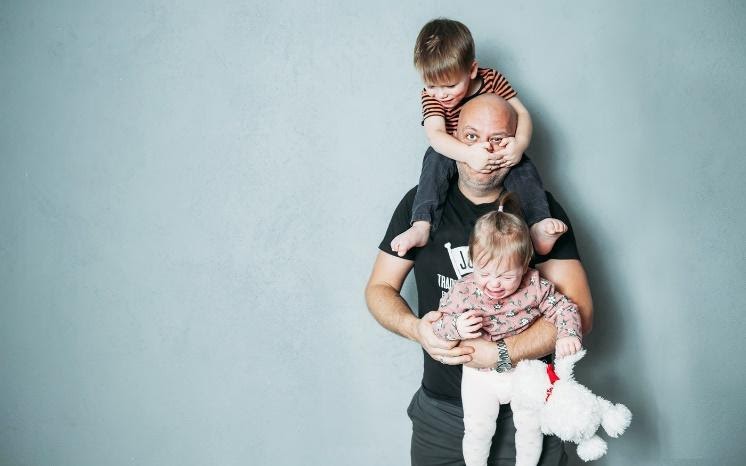You know the feeling? The one where your heart rate is slowly rising, your stomach starts to lightly churn, and you’re looking into your little cherub’s eyes while sending that telepathic message of, ‘please don’t, not here’. You start to quickly look around to see who is nearby, wondering who is watching, and how many people are going to hear. Then it starts.

Managing toddler tantrums, especially in public, is something every parent has experienced, and it can be incredibly anxiety-provoking. The very thought of potentially enduring a tantrum can be enough to stop a parent from going out with their child. You may not be able to stop every tantrum, so here are five tips to help you avoid the worst of it.
1. Prep, prep, prep!
You know when you prepare for a family holiday, you try to think of every scenario and prep for it. Spare nappy bags, the portable high chair, the 6 types of back up food in case they don’t eat when you go out, the cat and the dog. Yep, you’ve got everything covered. Now that is the parent to be before that little trip out to the shops with your child.
Provide specific information for them using what, when, where, and how. Using words, paint the picture in your child’s mind of what the outing will look like. Get the ball rolling with some reflective questions, such as “do you think we will drive past any dogs on our way to the grocery store?” Then provide some scaffolding or structure about the possible order of events.
“First we will go to the fruit section. How many apples do you think we should choose?” or “First we will get the fruit and then we will go and get some yoghurt”. It can also be helpful to add a nice little reminder of what kind of trip it is. “This is a food shopping trip. What flavour of yoghurt would you like to have once we are finished and in the car?”.

2. Be the paramedic – bring the calm to the storm
Okay, so despite your best efforts, the tantrum begins anyway, and is escalating rapidly. Your children’s emotions will go up and down, but eventually your child will match you and your emotions. Think about how a paramedic approaches an incident. They exude calmness, a sense of control and warm responsiveness. But it can be difficult to do that with what feels like a million sets of eyes on you. Pause a moment, and take a long slow breath in. Remind yourself that you are not the first to experience this in the shop and certainly won’t be the last. When you do speak, say the words slowly, keeping your voice calm and level.
3. Name it to Tame it
There is a great phrase in psychology called Name it to Tame It, which was coined by Dan Siegal, author of The Whole-Brain Child. Every behaviour serves a purpose and is a form of communication. Sometimes simply naming the emotion, can lower the intensity of it. This helps your child to know that you get it and understand their point. For example, “I can see how sad you are feeling, because you really wanted that dinosaur”.
Check out Dan Siegel’s video to see the neuroscience behind this technique.

4. Redirect and offer choices
Once you’ve named the emotion, the intensity may lower just enough to use a little redirection, also known as distraction. Offering small choices such as “do you want to pick the juice or the snacks?, or “would you like me to choose or would you like to?”, can give the child a sense of control while there is chaos brewing in their emotions and body. Try to avoid using closed questions such as, “Do you want to leave right now and not get anything?” or “do you want to pick the yoghurt ?”, as the answer will inevitably be a resounding no. Offering choices can redirect away from the highly used ‘no’ and provide your toddler with a sense of choice and control.
5. Don’t give in to tantrums
Desperate times can call for desperate measures, so whilst it is tempting, and yes, easier at times to give in to a tantrum, don’t. Kids are smart. When you give in, your child quickly learns that a tantrum gets results and they know exactly what level the behaviour needs to be, to get the outcome they want. So, chances are, the next trip to the shops will be the same, possibly worse and no one wants that.

But remember, sometimes even with the best preparation, displaying the ultimate level of Zen (Buddha himself would be impressed), and delivering the exact lines from a parenting book, it just may not be your day (or theirs!). That’s okay, regroup and try again another day.
Not sure if it’s a tantrum or a meltdown?
Questioning whether your child’s behaviour is age appropriate?
Dot Connect QLD (DCQ) can help. Whether you’re wanting some more information, seeking practical tips and tricks, or would like training in parenting programs such as 123 Magic, DCQ can help connect the dots and get behaviours back on track.
In the meantime, check out DCQ’s top picks for parenting books.
Call 0451 166 917 to book your appointment.

Hi, I’m Kelly Wozencroft, and I'm an Educational and Developmental Psychologist. I help children, teens, young adults, parents and families make sense of behavioural, social, emotional and educational issues. I’m not your typical ‘couch’ psychologist. Instead, I use a creative and modern approach to help you find answers and establish a plan for moving toward a healthier and happier life.
Loved it? Share it!
Are you overwhelmed with options and not sure where to turn?
Dot Connect Queensland will help you feel clearer, supported and in control of finding the right help for your loved one.
